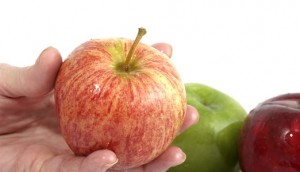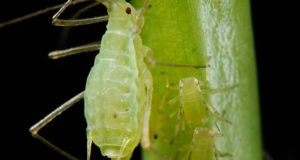Welcome back to my bi-weekly rant on the ever-popular and increasingly necessary Off the Grid site. I’d like to take a moment to thank Bill, Brian, Jeramy, Hanne, and the rest of the crew here at OTG for creating and maintaining this valuable resource to help folks deal with the troubled times we are all experiencing now and help us prepare for the greater difficulties we will experience in the future.
Some of my friends and neighbors have been complaining about hearing too much bad news recently. Well, to quote the late, great Al Jolson, “You ain’t heard nothing yet!”
 Despite all the squeaks and creaks that come with time, being on the planet for over six decades has a few advantages. I’ve had a chance to experience the good and the bad; I’ve learned a few things and unlearned a few others. I’ve heard politicians spout enough manure to fertilize every garden from Portland, Maine to Portland, Oregon for a century or two and watched the promises of both political parties vanish into smoke as soon as they’re elected. I’ve discovered that trusting public officials to protect your health is a fool’s bet.
Despite all the squeaks and creaks that come with time, being on the planet for over six decades has a few advantages. I’ve had a chance to experience the good and the bad; I’ve learned a few things and unlearned a few others. I’ve heard politicians spout enough manure to fertilize every garden from Portland, Maine to Portland, Oregon for a century or two and watched the promises of both political parties vanish into smoke as soon as they’re elected. I’ve discovered that trusting public officials to protect your health is a fool’s bet.
All this came back to mind recently when I read a few pieces of disturbing news about apples. Apples are the second most popular fruit in the United States after bananas. It is estimated that Americans, on average, eat about forty-six pounds of fresh and processed apple products a year, so concerns about the health of apples are a pretty big deal. With that in mind, I’ve decided to interrupt my on-going series on vegetable families to focus on one of fall’s favorite fruits and some of the dangers they might present to you and yours.
The whole thought of dangerous apples is likely to strike some folks as pretty bizarre. After all, we’ve all heard the old saying that “an apple a day keeps the doctor away.” I’ll be the first to admit that apples, in their natural state, pack a whole lot of nutrition into a small package. Apples are a good source of both soluble and insoluble fiber. The insoluble fiber provides roughage and is quite filling. The soluble fiber, primarily pectin, helps reduce cholesterol levels. In addition to fiber, apples contain disease-fighting phenolics and other phytochemicals which some studies have shown fight cancer and reduce your chance of developing heart disease.
So, what’s not to like? Frankly, most apples you’ll find in your local supermarket aren’t “in their natural state.” They have been sprayed with so many pesticides and fungicides that they would probably cause Snow White’s Evil Queen to nod her head in appreciation of the attempt to duplicate her formula.
Last month, the Environmental Working Group put apples on the top of their list of fruits and vegetables with the most pesticide residue. Since then, many defenders of the pesticide industry have blasted this report, claiming that the levels are well below USDA guidelines. Ignoring the fact that I trust the USDA about as far as I can throw a full-grown bull elephant, I’d argue that the biggest problem isn’t the quantity of any individual pesticide or fungicide found on commercially grown apples so much as the sheer number of pesticides and fungicides that can appear on one apple.
The USDA’s very own Pesticide Data Program lists forty-two pesticide residues found on apples. Seven of these substances are known or probable carcinogens; six are developmental or reproductive toxins. If you’re wondering where the honeybees went, a whopping seventeen are honeybee toxins. Although our friends at the USDA have approved thiabendazole, diphenylamine, acetamiprid, azinphos-methyl, and other interesting-sounding substances to be used on apples, no one actually knows what happens when these substances combine in your body. Since chemicals inevitably react with each other, you’re conducting your science experiment every time you eat a fruit or veggie laced with a mixture of various pesticides and fungicides. Good luck with that!
Another argument that popped up after the Environmental Working Group list was released was the fact that organic produce also contains some level of pesticides. Believe it or not, my friends, this is absolutely true.
Tests for thiabendazole residue on organic apples found amounts ranging from .0004 micrograms to .02 micrograms in 100 grams (equivalent to about 3.5 ounces). Domestic organic apples were shown to have amounts of diphenylamine ranging from 1.0 micrograms to 7.0 micrograms. Then again, these same tests showed that an equal amount of conventional apple samples contained anywhere from 42.5 micrograms of thiabendazole to 700 micrograms. Diphenylamine in the conventional apple samples ranged from 38.5 micrograms to 290 micrograms. To measure worst case against best case, you’d have to consume about 2100 heavily dosed organic apples to get as much thiabendazole in your system as you’d get from one similarly sized lightly dosed conventional apple!
Don’t believe those that tell you washing or peeling is going to solve the problem with your conventionally grown apple. Most of the substances sprayed on apples are designed to be rain resistant and penetrate all the way down to core. If you don’t have the space or inclination to plant a few apple trees of your own, purchasing domestically grown organic apples is your next best option.
Another disturbing report about apples that was brought to my attention in recent days focused on apple juice. The Rochester, New York, based Empire State Consumer Project had several brands of apple juice and applesauce analyzed and found that one sample of Mott’s apple juice contained a level of arsenic which is five times higher than the EPA’s legal limit for drinking water.
A few days after this report was published, investigators from the state of New York and the Food and Drug Administration paid a visit to the Mott plant at Williamstown, New York, and declared that everything was hunky-dory.
Personally, when it comes to apple juice, I’m here to tell you that most conventional brands are neither hunky nor dory. Over two-thirds of the apple juice sold in the United States is imported from China. Over a century ago, many American farmers put their faith in fertilizers that had a high arsenic content; Chinese farmers still do. If we could convince farmers in China to convert to naturally balanced organic fertilizers like Protogrow, I’d be a lot less concerned about all those little juice boxes I see mothers giving their children. As it is now, Chinese produce is often grown using fertilizers that contain dangerous heavy metals and other unsavory substances. The juices made from this produce are hazardous to your health and even more hazardous to the health of your children. We have no program in place to test these juices (imported or domestic) to determine how much arsenic they may contain.
If you’ve read about the FDA’s comment that the Empire State Consumer Project only had one sample of Mott’s apple juice tested and are taking comfort in the hope that it was just one bad batch, I’ve got sobering news. Just last year, the St. Petersburg Times sent several samples of apple juice out to be tested and also discovered higher than acceptable levels of arsenic in Mott’s apple juice. Now, don’t go thinking that I’m just picking on Mott’s apple juice. In attempt to cut costs, just about every company that sells apple juice is using Chinese apple concentrate to create the sugary substances they call juice. If you can’t make your own, seek out an organic, real juice that doesn’t have a whole lot of extra stuff like corn syrup added to it. Yeah, it’s going to cost you a few extra bucks, but it will be a small price compared to the future medical bills you and your kids will have to deal with down the line.
In closing, I’d just like to reiterate my survival philosophy—grow your own. You know where it’s been, you know how it got there, and you’ll be feeding your family the most nutritious and delicious food available. When hard times get harder (and they will), you’ll have your own dependable supply. Since apple trees take about five years to start producing fruit, I suggest you start planning today for tomorrow.
Until next time, this is Jerry, wishing you and yours healthy eating from your survival garden.
© 2011 Off the Grid News
 Off The Grid News Better Ideas For Off The Grid Living
Off The Grid News Better Ideas For Off The Grid Living



